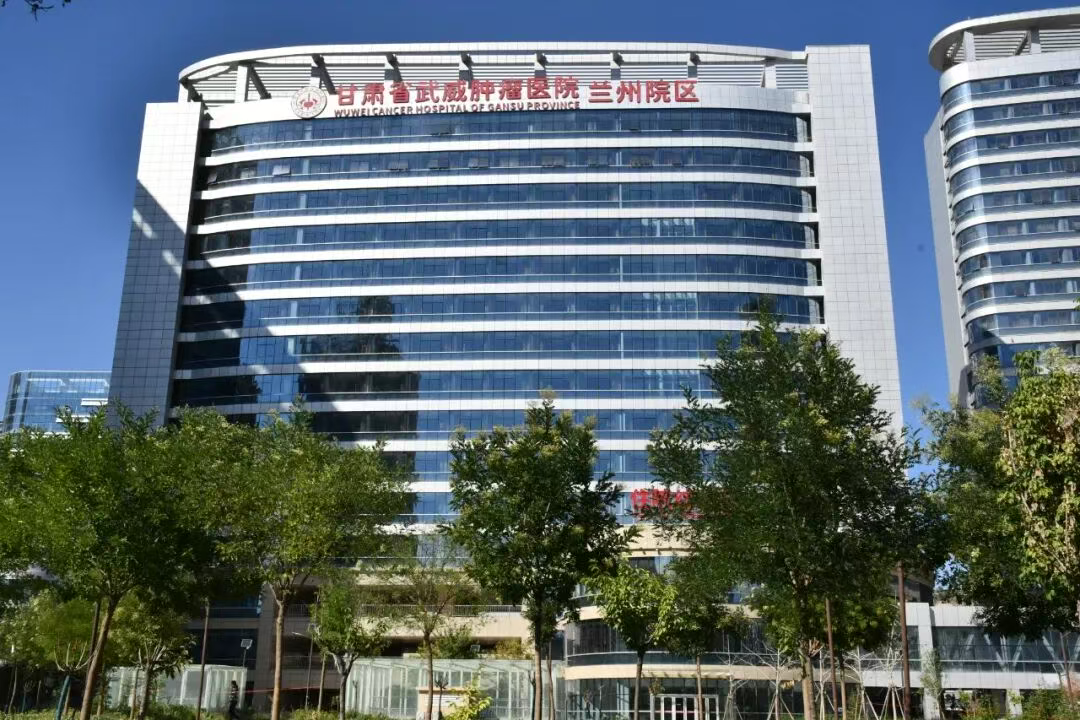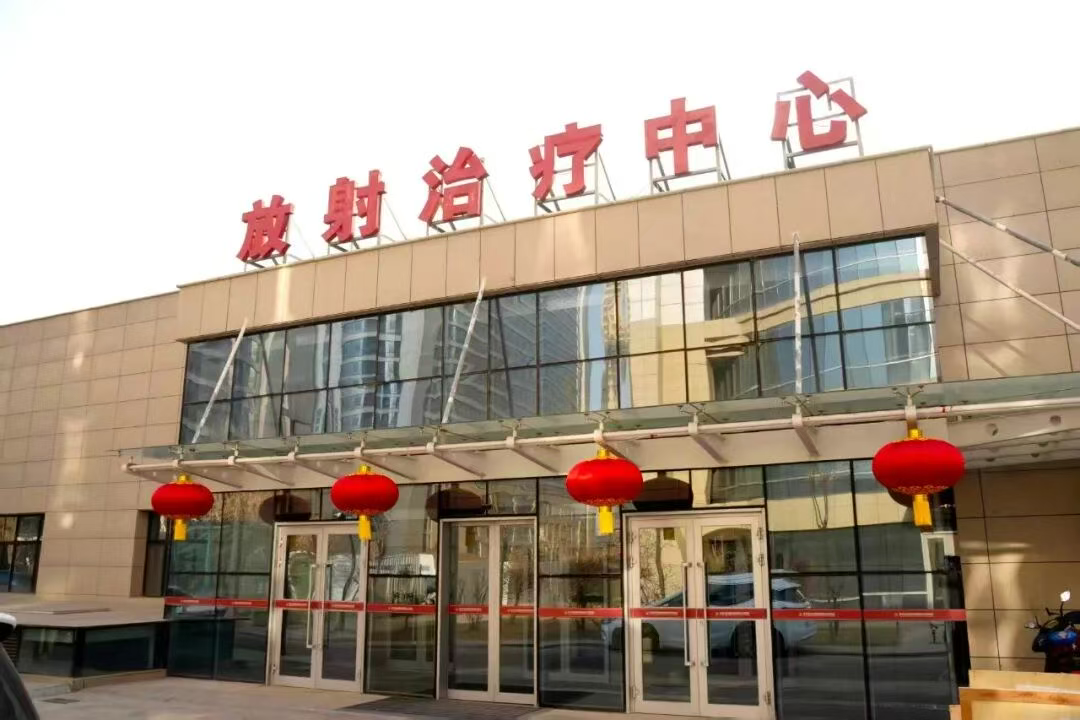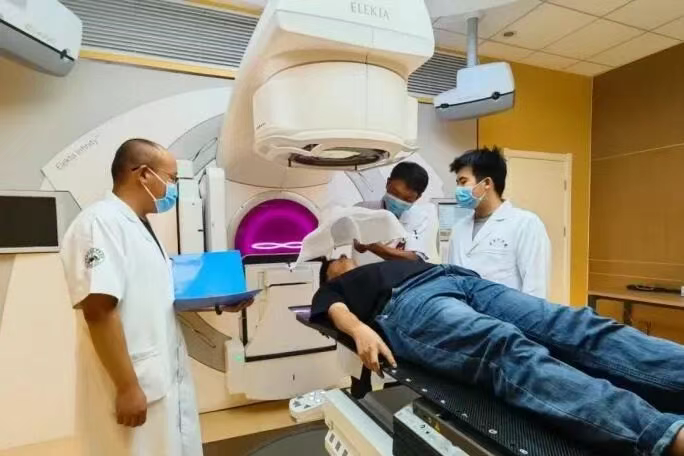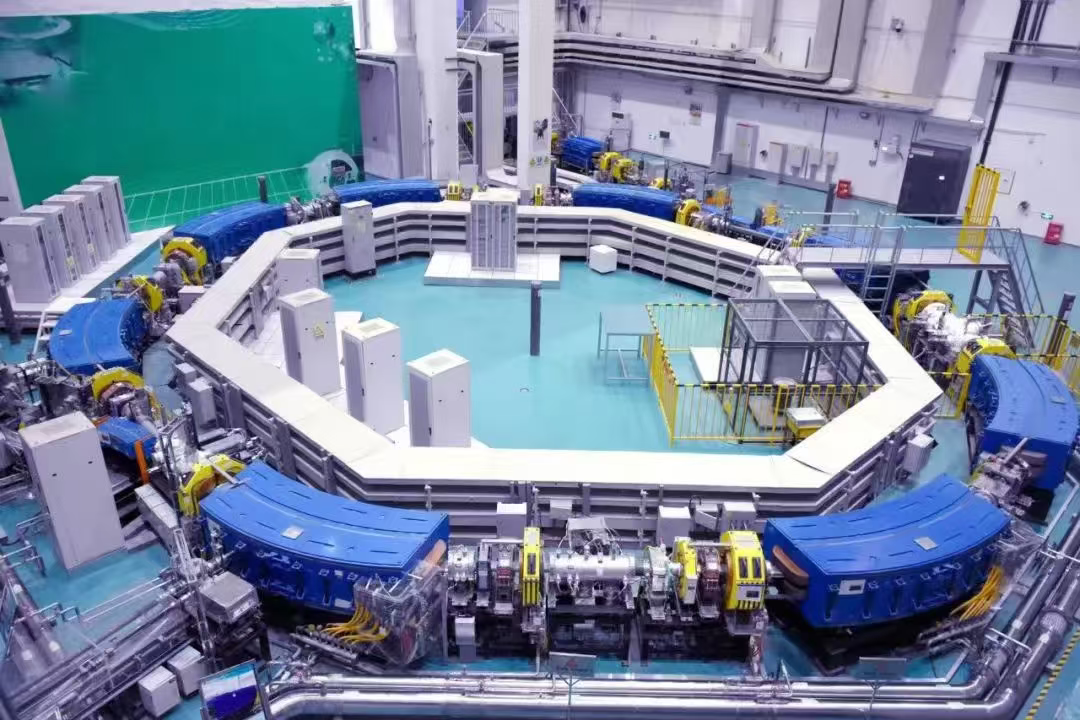Single-Port Thoracoscopic Surgery: Leading Lung Cancer Treatment into a New Era of Precision with Mi
Single-Port Thoracoscopic Surgery: Leading Lung Cancer Treatment into a New Era of Precision with Minimally Invasive Power
—Gansu Wuwei Cancer Hospital Lanzhou Branch Successfully Completes First Difficult Case of High-Difficulty Single-Port Thoracoscopic Radical Lung Cancer Surgery
Recently, the Lanzhou Branch of Gansu Wuwei Cancer Hospital invited Professor Li Jian, Chief Thoracic Surgery Expert from Peking University First Hospital, to successfully perform a single-port thoracoscopic radical resection for right lung cancer on a 52-year-old female patient, Ms. Yang. After seeking treatment at multiple hospitals, the patient came to our hospital based on its reputation. Following a multi-disciplinary consultation at the branch and with Professor Li Jian's surgical guidance, the internationally advanced 3cm single-port minimally invasive technique was used to completely resect the right middle lobe and perform systematic lymph node dissection. The surgery lasted only 1 hour and 30 minutes, with blood loss less than 50ml, demonstrating the hospital's solid strength in the field of complex lung cancer diagnosis and treatment.
Patient: Female, 52 years old.
Chief Complaint: Intermittent cough discovered for over 8 months.
Present Illness: The patient sought medical attention at Huining County Traditional Chinese Medicine Hospital 8 months ago due to cough. CT examination showed: multiple solid nodules in the right middle lung lobe. No puncture or further treatment was performed. Two months ago, she received phlegm-resolving and anti-infection treatment at Dingxi People's Hospital and was discharged after improvement. The patient now experiences intermittent dry cough, occasionally with white sputum, no chest tightness, shortness of breath, or fever. Bowel and urinary habits are normal.

Past Medical History: Psoriasis and Sjogren's syndrome for over ten years, treated at local hospitals.
Physical Examination: No significant positive signs observed.
Auxiliary Examinations
2025-01 Huining County Traditional Chinese Medicine Hospital. Chest CT: 1. Stranding in the left lower lobe and right middle lobe, localized atelectasis in the medial segment of the right middle lobe; 2. Multiple solid nodules in the right middle lobe.
2025-08-29 Lanzhou University Second Hospital, Chest CT: 1. Nodular focus in the medial segment of the right middle lobe (20×23mm), differentiate organizing pneumonia from neoplastic lesion, the former is more likely. 2. Multiple small nodular foci in both hila; scattered inflammatory strand-like foci in both lungs. 3. Old lymph nodes in the mediastinum and both hila. 4. Localized thickening and adhesion of the left pleura.
2025-08-30, Lanzhou University Second Hospital, Neck Lymph Node Ultrasound: Multiple abnormally enlarged lymph nodes in the left neck (Region IV). Thyroid shows no significant abnormality. No significantly abnormal lymph nodes in the right neck.
2025-09-01, Lanzhou University Second Hospital, Neck Lymph Node Fine-Needle Aspiration Pathology: (Left neck Region IV lymph node aspiration smear) A large number of lymphocytes seen, no definite epithelial cells identified.
2025-09-02, Lanzhou University Second Hospital, PET-CT: 1. ① Hypermetabolic soft tissue nodule in the medial segment of the right middle lobe (20×19mm, SUVmax 8.0); Enlarged left supraclavicular lymph node (15×10mm) with increased metabolism (SUVmax 8.5); In summary, differentiate peripheral lung cancer with supraclavicular lymph node metastasis from pulmonary inflammatory nodule/supraclavicular inflammatory lymph node, biopsy of the left supraclavicular lymph node is recommended. 2. Bilateral maxillary sinusitis. 3. Ground-glass opacity in the right upper lobe, no abnormal metabolism.
Treatment: After admission, relevant examinations and tests were completed. A multi-disciplinary team (MDT) discussion was held involving departments of Thoracic Surgery, Surgical Oncology, Medical Oncology, Radiation Oncology, Anesthesiology, ICU, Imaging, and Pathology at Gansu Wuwei Cancer Hospital. On 2025.09.21, under the guidance of Professor Li Jian from Peking University First Hospital, a single-port thoracoscopic radical resection for right lung cancer was performed under general anesthesia. Postoperative care followed the Enhanced Recovery After Surgery (ERAS) protocol: The patient was able to get out of bed and move on the first postoperative day. The chest drain was removed on the third day, consistent with ERAS principles applied pre- and post-operatively. Pain score was ≤2 (Visual Analog Scale). The patient met discharge criteria within 5 days.
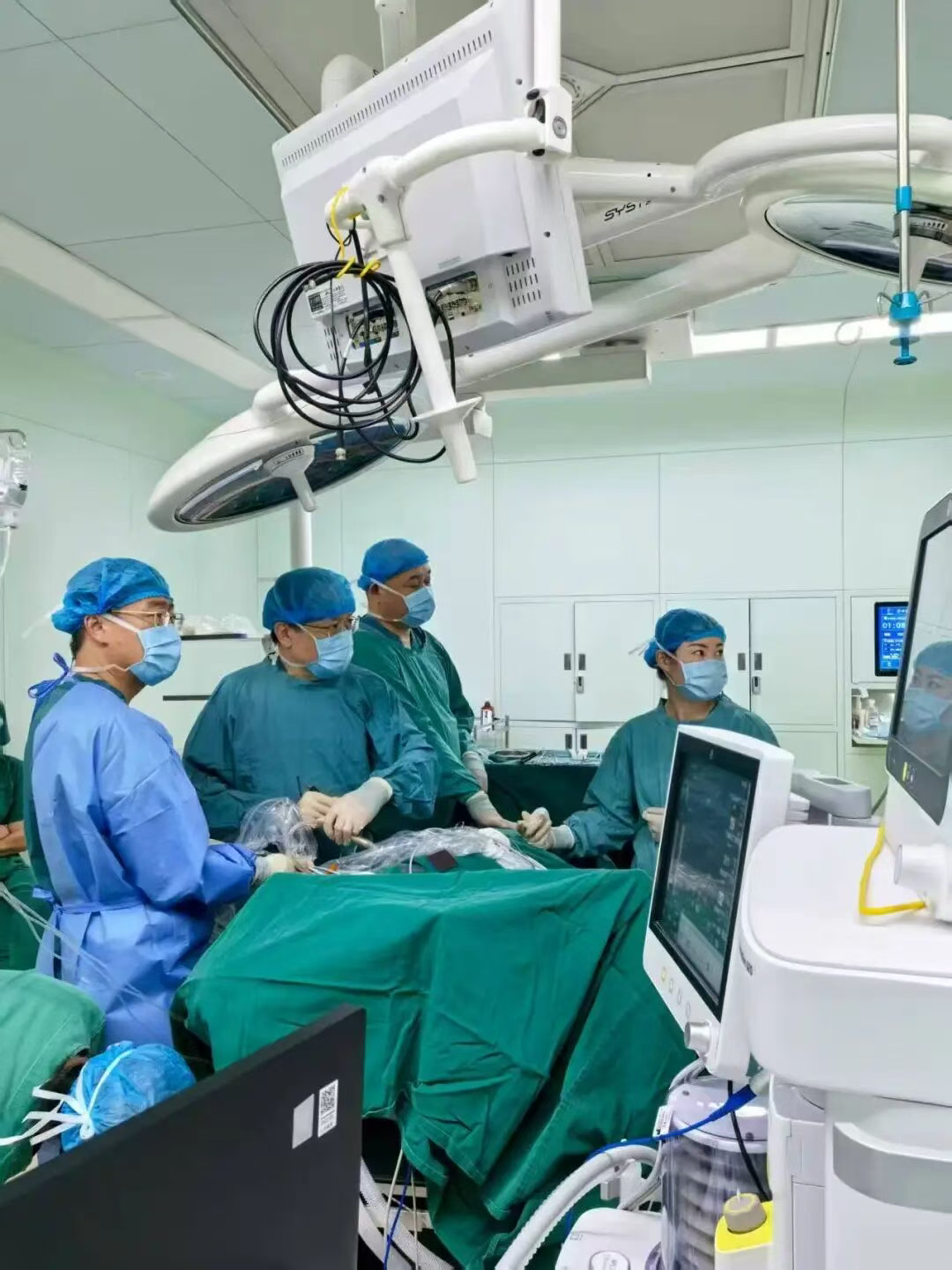
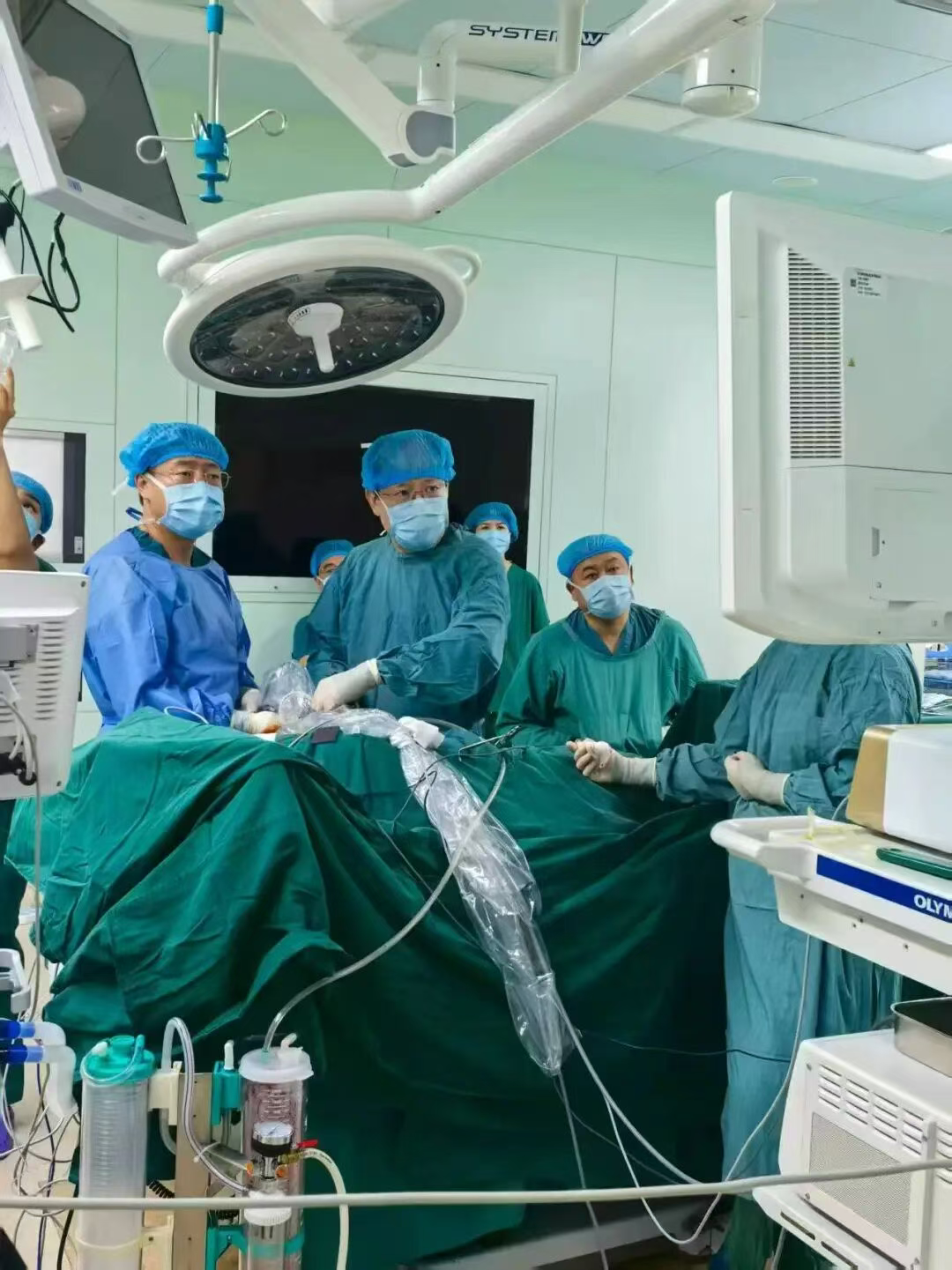
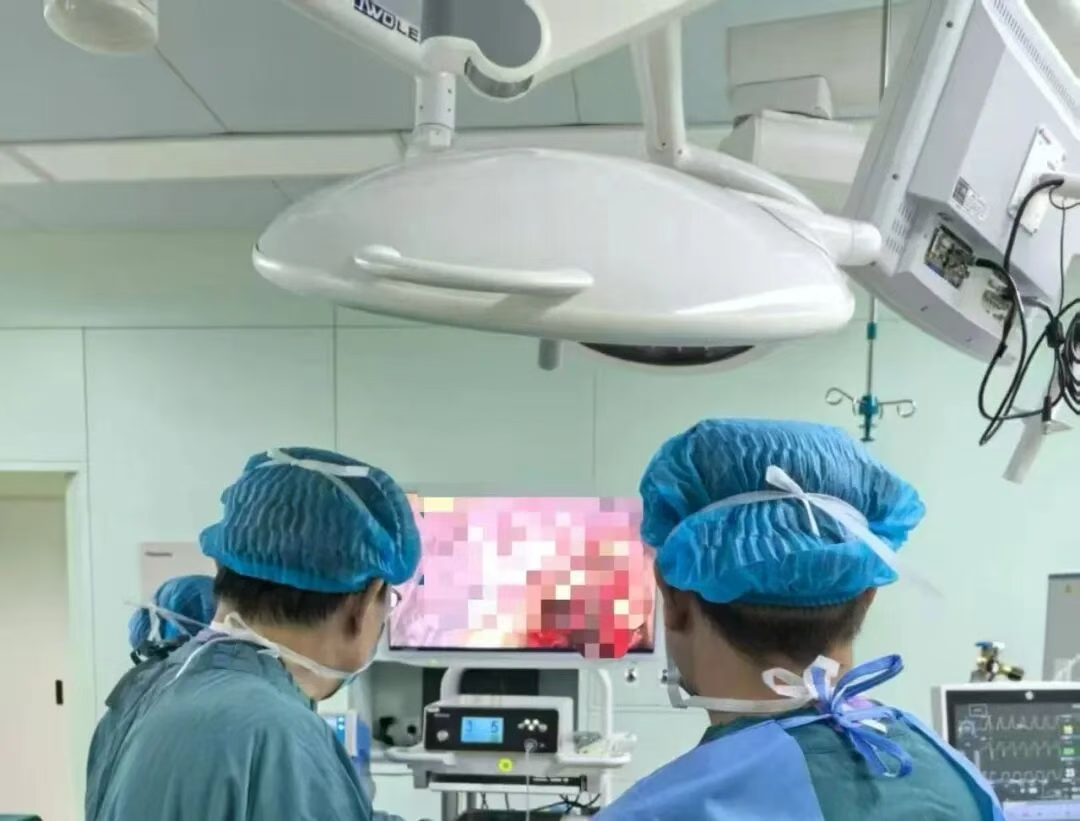
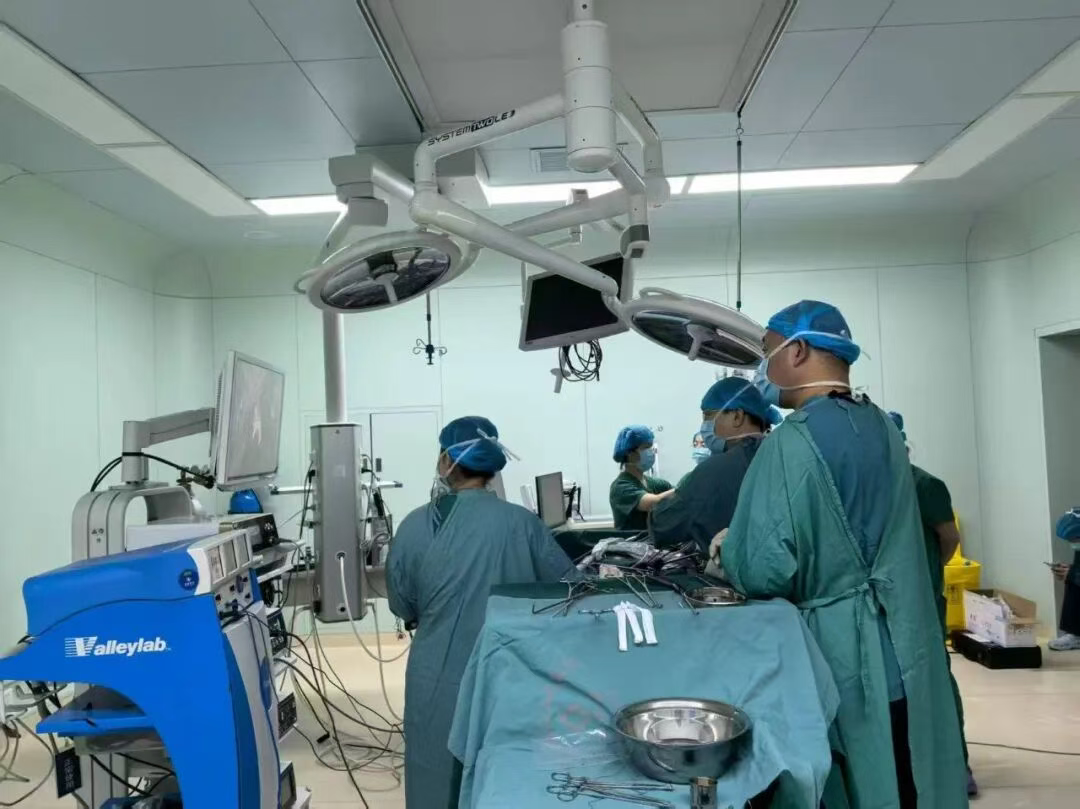
Postoperative Pathology: (Right middle lobe) Peripheral invasive adenocarcinoma (acinar type + papillary type + lepidic type). Tumor size 2x2x1.8cm. Cancer cells did not invade the visceral pleura. Spread through air spaces (STAS) was observed. No definite cancer emboli were seen in lymphatic or blood vessels. No cancer cells were found at the bronchial margin of the submitted lung tissue. Lymph nodes (0/13) showed no cancer metastasis, specifically: (Groups 2, 4) lymph nodes (0/4), (Group 7) lymph nodes (0/6), (Group 9) lymph nodes (0/1), (Group 10) lymph nodes (0/2). pTNM staging: pT1cN0 stage. Immunohistochemistry results: CK7 (+), C-MET (-), Her-2 (0), Ki-67 (index≈5%), NapsinA (+), P40 (-), P63 (-), TTF-1 (+).
Our hospital's Surgical Oncology department, leveraging high-quality medical resources, regularly invites renowned experts in the field of oncology from within and outside the province to conduct multi-disciplinary consultations and provide surgical guidance and training, offering strong support for precise diagnosis and treatment and technical advancement.
Lanzhou Heavy Ion Center
Gansu Wuwei Cancer Hospital is a state-owned public Grade III A tertiary specialized cancer hospital. The Lanzhou Heavy Ion Center is the second clinical application center for China's independently developed heavy ion technology operated by Gansu Wuwei Cancer Hospital. Partnering with the first Chinese heavy ion treatment system, the second Chinese heavy ion tumor treatment system commenced clinical operations at the Lanzhou Heavy Ion Center on November 15, 2024. As of now, the center has completed photon and heavy ion treatment for over 330 patients, covering diseases such as lung cancer, pancreatic cancer, liver cancer, and glioblastoma.
The Lanzhou Heavy Ion Center has established an exceptional talent system gathering elites, building a team of expert workstations led by 50 top industry authorities, including Professor Shen Wenjiang, Lifetime Honorary Professor of the Department of Radiation Oncology at Peking University Health Science Center, and Professor Xu Bo, Standing Committee Member of the Chinese Medical Association's Radiation Oncology Society. Professor Wang Junjie, Chairman of the Chinese Medical Association's Radiotherapy Oncology Branch, serves as the Dean, providing powerful technical support for heavy ion therapy.
Simultaneously, the branch is equipped with a series of cutting-edge medical devices including a Varian VitalBeam medical linear accelerator, an Elekta Infinity four-dimensional image-guided linear accelerator, a 3.0T simulation positioning MRI, a GE 256-slice high-end CT scanner, and a Varian iridium-192 imported afterloader. These hardware facilities lay a solid foundation for heavy ion treatment, ensuring efficiency and precision throughout the treatment process.
Aiming to build a comprehensive, full-life-cycle cancer treatment system, the hospital has established departments including Radiation Oncology, Medical Oncology/Hematology, Surgical Oncology, Integrated Traditional Chinese and Western Medicine Oncology Rehabilitation, Critical Care Medicine, Digestive Endoscopy Center, Imaging Department, Laboratory Medicine, Ultrasound Medicine, Blood Bank, and Hematology Center Laboratory. It provides comprehensive treatments including photon radiotherapy, chemotherapy, heavy ion therapy, internal medicine, and surgical therapies, as well as imaging, laboratory tests, ultrasound, and bone marrow cell morphology examinations.
